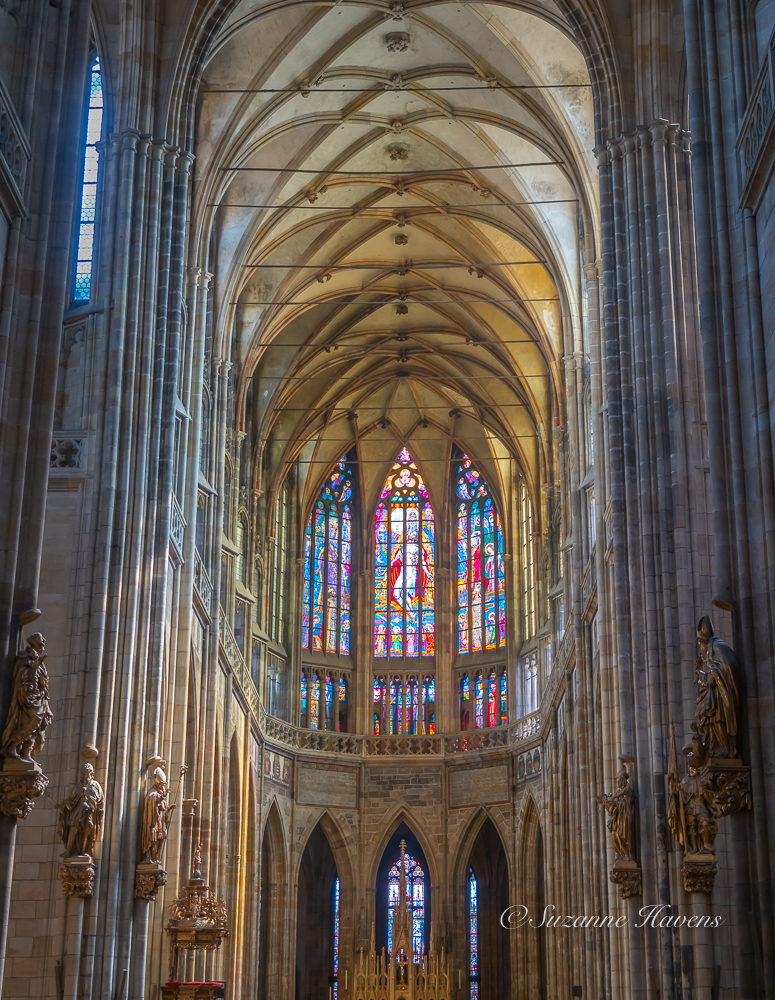We visited the beautiful capital of Estonia, Tallinn, in 2018 with buildings dating back to the 13th century. Although we visited in mid-day, I chose this image to imagine what it might look like in the evening.
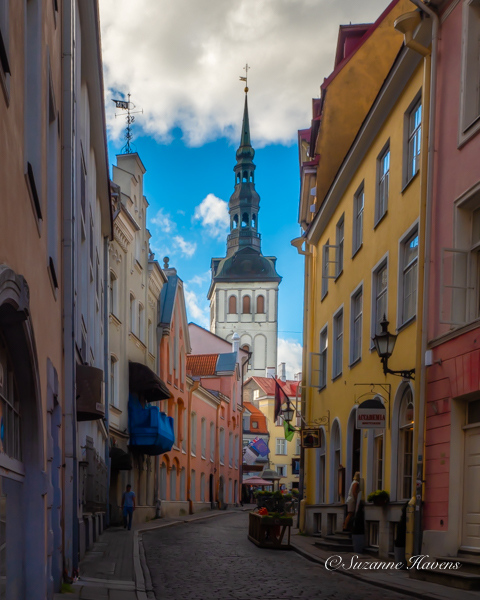

We visited the beautiful capital of Estonia, Tallinn, in 2018 with buildings dating back to the 13th century. Although we visited in mid-day, I chose this image to imagine what it might look like in the evening.


Tallinn has been an important trading hub for centuries. Today it is a World Heritage site and boasts many digital-age accomplishments, including the place where Skype was invented.
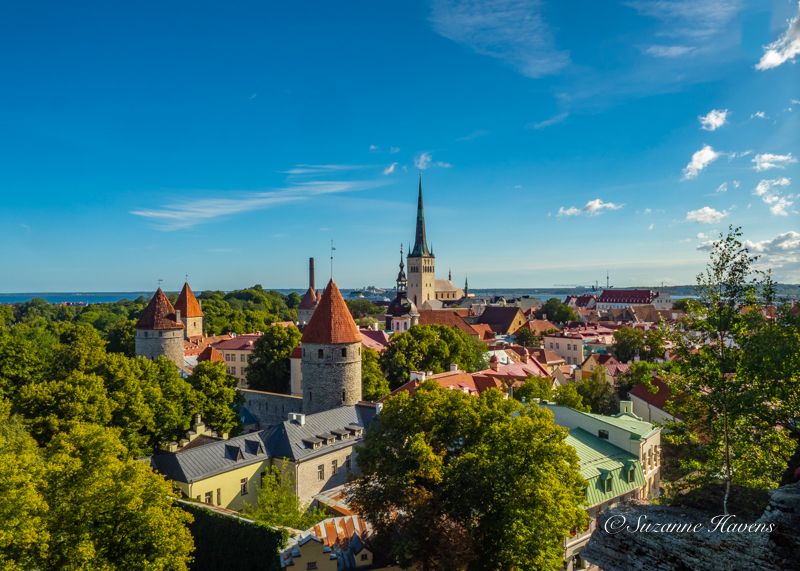
The Old City of Tallinn Surrounded by a Formidable Wall

The Medieval Wall

Alexander Nevsky Russian Orthodix Cathedral

Coats of Arms of Families Who Belong to This Church

The Medieval Pharmacy Continues to Flourish

Established in 1422

Contemporary Architecture Is as Interesting as the Medieval Buildings

A Beautiful Gate

Feet Vessels inside a Contemporary Pottery Maker and Shop

I can’t figure out how you can wear these shoes on the cobblestone walkways!

Colorful Buildings in the City

I would have loved to stay for dinner!
Wismar was one of nearly 200 medieval towns and guilds of 16 Northern European countries that joined the defense and trading league. I learned that Hansa or Hanse means league or company. The Hanse dominated trading from the mid-thirteenth century for nearly four hundred years. Although most participants bordered the Baltic or North Seas, The Hanse included towns in countries as far away as France and Iceland.
Today the Wismar town center is a UNESCO World Heritage Site. It is comprised of over 1700 buildings with over 1600 owners. Wismar is located on the Baltic Sea. Many of the town buildings have been restored to their medieval splendor. One couple who restored their building faced years of approvals through seven committees and invested over one million Euros.

A cast-bronze relief sculpture with Braille gives the sighted and unsighted an overview of the medieval city

St. Marien Church was destoyed in WWII. The tower has been rebuilt with some of the original cast bricks

Wasserkunst is a 16th c. spring-fed well located at the market place

St. George’s was a medieval Gothic red brick church and now a performace hall

The cast bricks allow the architects to form decorative elements
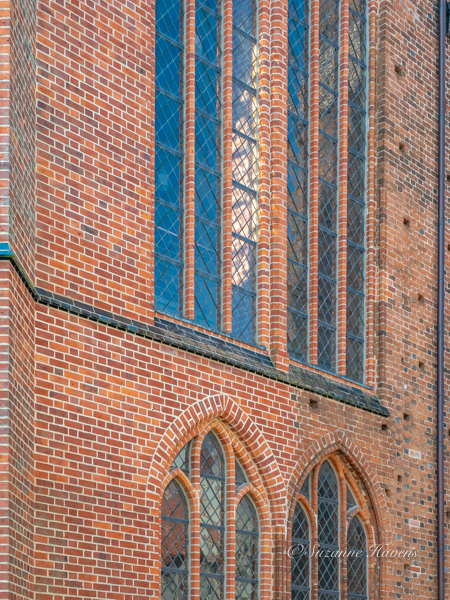
A detail of St. George’s Church
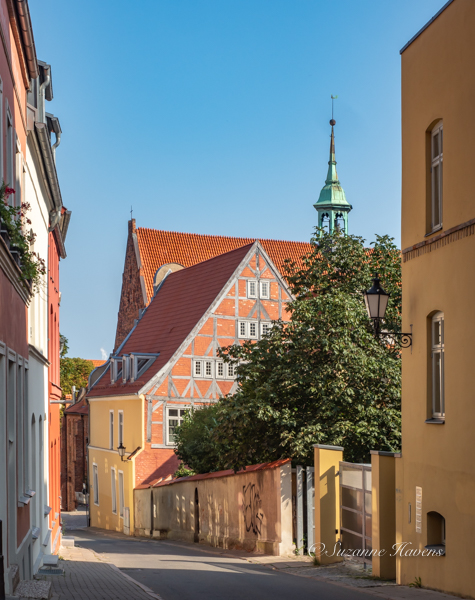
The pristinely restored medieval town has not escaped graffiti

Is that a blue-green cat jumping out of the building?

Maidens in relief sculpture guard this building

This medieval structure spans the canal. Bikes are a popular way to get around Wismar

Brauhaus am Lohberg has been brewing beer since 1452!

Dried hops decorate the brewery

Das Gemutliche Havenhaus, The Cozy Havenhouse, with sailboats in the windows rents rooms

This cracked me up. Even though the words look suspicious, they mean jewelry and watches.

The well, St Marian’s Church tower and the main square

My first photo of Norway. It reminded me of Maine
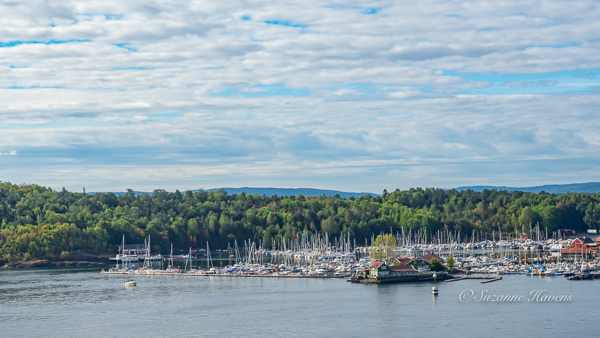
Great place to sail to explore all the islands

Contemporary and traditional architecture
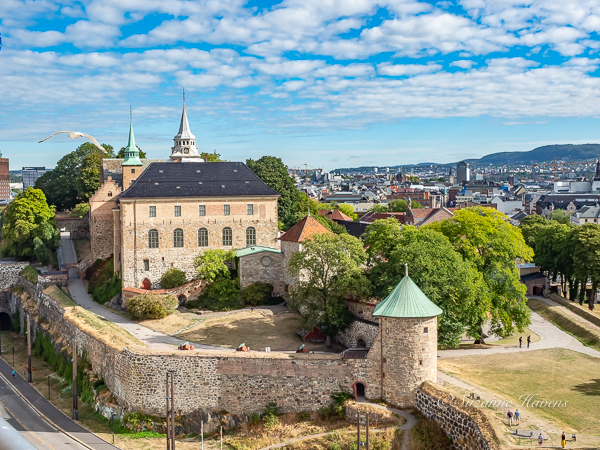
Akershus Fortress and Castle, built in the 1290s, is located right on the harbor

The Norwgian National Opera and Ballet: A contemporary way to enjoy the city on the water
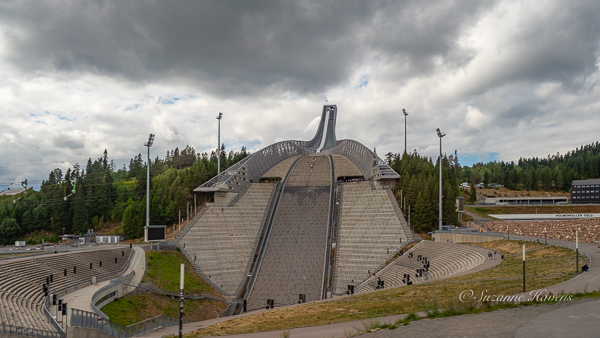
Holmen Kollern National Ski Arena: Olympic Ski Jump–terrifying!

The park is filled with Gustav Vigeland’s lifework of sculpture
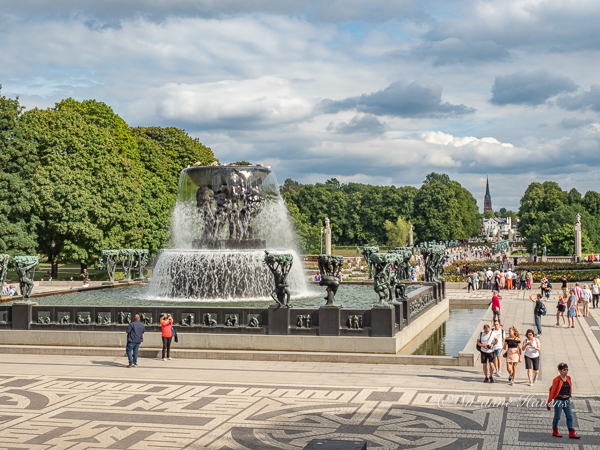
All Gustav Vigeland’s sculptures that fill this city park are without clothes. He thought it would date the figures to wear clothes.

The interaction of people with the trees and the water feels universal.

It is said that to touch the foot brings good luck, so it is polished from all the touching.

The girls look natural and innocent. Families visit the city park and enjoy the humanity.

Edvard Munch’s “Hans Jaeger” 1889 at the National Gallery. Munch had an entire gallery there and yes we saw “The Scream.” Munch said he did not paint people, but rather emotions.

Concert house on right and French domed Evangelical church

French domed Evangelical Church

French Dome Church with man with BAD VIBES tattoo

The Reichstag from the Marshall Bridge over the Spree River

The Reichstag built in 1888, burned during Hitler’s rise to power, and against seated the Bundestag in 1999

Charlottenburg Palace built in the late 17 c. and expanded in the 18th c., Baroque and Roccoco

This statue at the Charlottenburg Palace appears to be fighting against an approaching storm
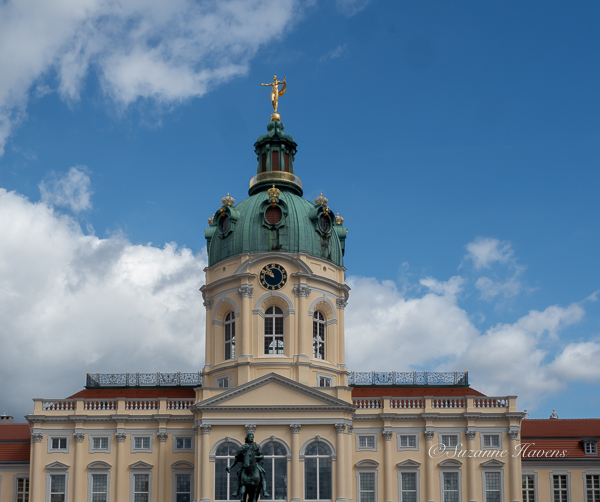
The goddess, Fortuna, tops the Charlottenburg Palace dome. The foreground sculpture of Fredrick William, Elector of Brandenburg and Prussia, was created by Andreas Schluter in 1703

A relief sculpture on the wall of the zoo

Architectural waves

Contemporary architecture

Embassy row–the Pan Nordic complex

Austrian Embassy

Egyptian Embassy
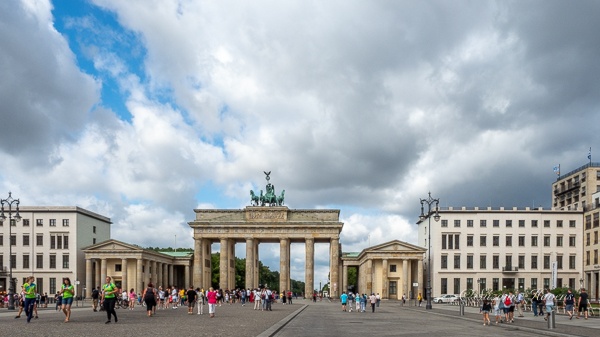
18th c. Prussian Neo-classical gate at the western end of Unter den Linden was in the Soviet sector and now symbolizes the reunification of Germany

The Brandenburg Gate quadriga was taken to Paris when the French occupied Berlin. The quadriga was returned to Berlin after Napaleon’s defeat at Waterloo. The quadriga was destroyed in WWII and recast from the original molds. The iron cross and eagle, symbols of Prussia, were removed by the Communist regime but they were added again after reunification.

Under a linden tree on its eponymous street

The Hotel Adlon, located next to the Brandenburg Gate on Under den Linden, was center of hospitality to the rich and famous and rebuilt as the 5-star Hotel Adlon Kampinski

The elephant, lion’s head and frog with lotus fountain was part of the original Adlon, “a present from the Maharaja of Patiala around 1930” per the Kampinski website and inspiration for the 6 million Euro remodeling

In spite of shorts, tee shirt, ball cap and athletic shoes, we were not asked to leave

Floral display in the lobby comprised of many vases instead of just one

The Adlon Kampinski skylight features eagles, gryphons and six-pointed stars
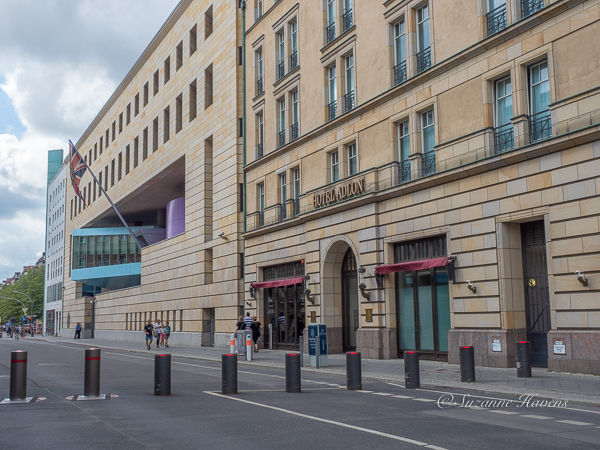
The hotel is adjacent to the British Embassy
The last time we visited Berlin it was November of 1980. The weather was cold and wet. Skies were grey. The wall was a formidable reminder of the Cold War. West Berlin blazed with lights. Restaurants, cafes, and bars were filled with boisterous people. Shops were filled with goods. East Berlin was drab. We saw bullet holes and leaky ceilings in the museum that housed the Pergamum/Pergamon antiquities. Shops had few goods. The buildings were blackened from burning soft coal. We stood out because of our brightly colored coats. We stood out because we laughed and talked while taking in the sights. The faces of soldiers checking our passports at Checkpoint Charlie were grim. Today reunification has brought resources, pride, joy, and worldwide brands to all of Berlin. Post WWII plain buildings have given way to more style and beauty. Pre-WWII buildings have been restored.

Outdoor aviaries, cranes, skyscrapers, and reflections

Birds in an outdoor aviary

The absent mauer (wall) at Checkpoint Charlie is memorialized by museums and fast-food stores

The last time we were here the Berlin Wall loomed ominously. Now KFC is prominent

This Soviet soldier seems so benign now compared to when we crossed over and back between West and East Berlin in 1980

The Titanic Hotel name has horrible associations for me. Stickers on poles are a dubious symbol of freedom.

A cafe with chandelier will beckon customers soon

Currywurst (sausages) are so popular they merited a museum

Pre- and post-WWII architecture live side by side in Berlin
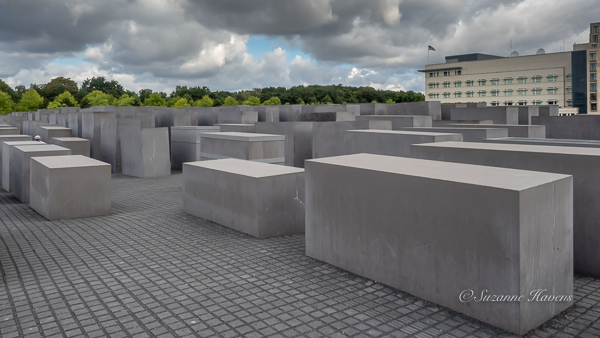
The Holocaust Memorial with the adjacent American Embassy. A single head rising above shows the scale

The somber sky and grey cement contrast strongly with the bright green leaves of life after the Holocaust
Dresden was the capital of the Saxon Kingdom. Dresden has been likened to Florence, Italy for its majestic architecture and art. Late in WWII British and American forces bombed the old city, some say for revenge of the German bombings of London, others say to break down morale to speed up capitulation of the Nazi government. The architecture is being restored using Renaissance paintings as guides.

Dreden Palace of Saxon Kings

Tile Mural of the Kings of Saxony seemed about the length of a football field
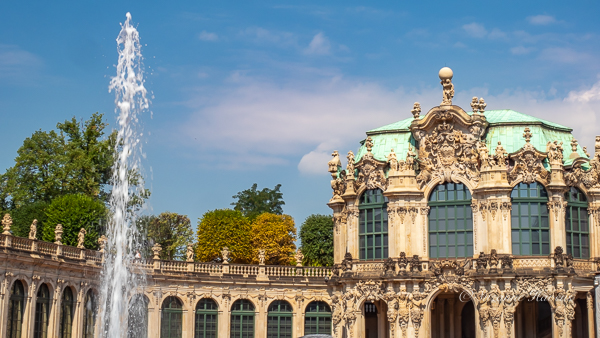
Zwinger Palace

Kunstakademie, Academy of Fine Arts
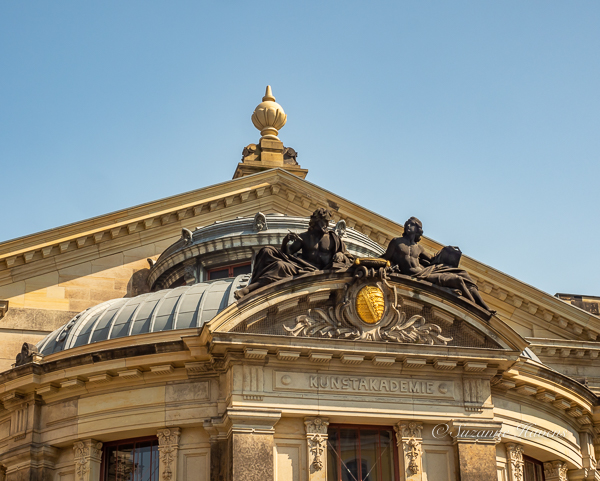
Kunstakademie, Academy of Fine Arts
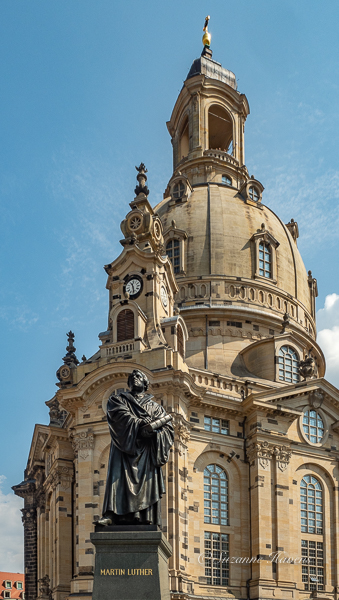
Martin Luther’s statue stands in front of the Frauen Kirche, the largest Lutheran church in Europe, rebuilt from rubble of the WWII bombing of Dresden

The statue of Martin Luther was created in 1886 and miraculously still stood after the WWII bombing of Dresden

Modeled after the Bridge of Sighs in Venice, connecting two palaces

A closeup of the cherub on Dresden’s Bridge of Sighs

Even though we had no time to visit Dresden’s museums, I was able to make a panorama of theis very persuasive banner
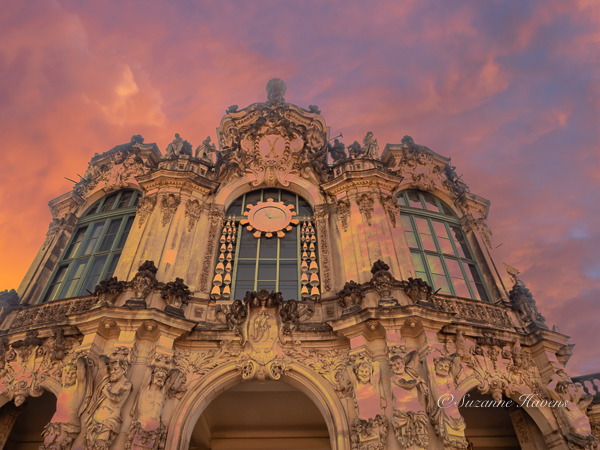
My montage, giving dramatic light to the beautiful architecture
Francouzská Restaurace Art Nouveau is a beautiful restaurant that opened in 1912 in the Art Nouveau style.







St. Vitus Cathedral is located within the Prague Castle. Church and State were joined and in 1439 The Holy Roman Emperor and King of Bohemia was Charles IV. He started the building of the cathedral on a site that dates back to the 10th century. After many wars that interrupted the building process, the cathedral was finally consecrated in 1929. The neo-Gothic architecture with expressive stained-glass windows is intriguing and inspiring.

